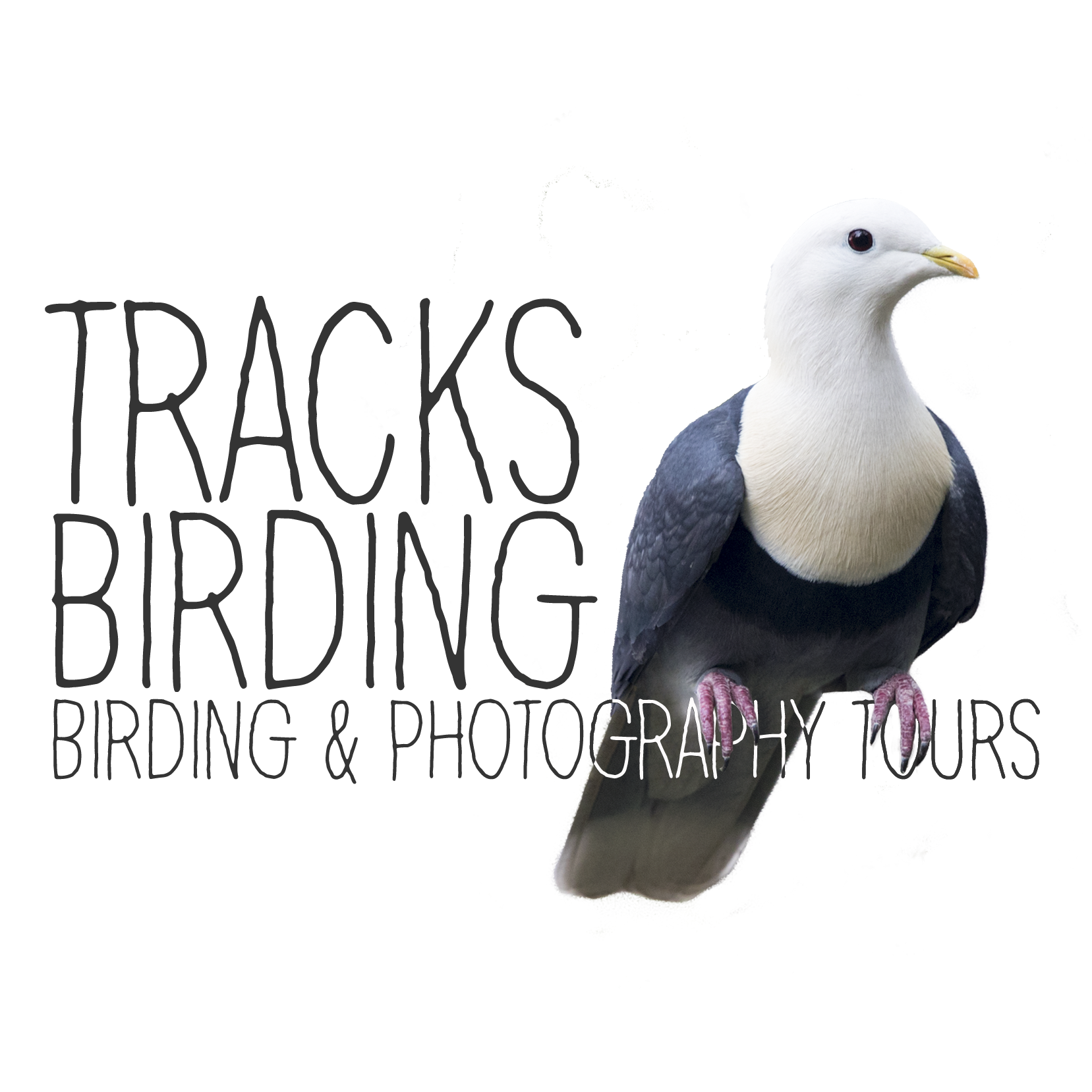LOCAL BIRDS WE TRY AND TARGET ON TOUR
Home to more than 400 species of birds, Darwin and its surrounding area is a birdwatcher’s paradise. It has many varied habitats including harbour, mangrove-lined creeks, billabongs, savannah woodlands and seasonal wetlands and supports both migratory and endemic species. Here are just some of the local birds and endemic birds we can see and photograph on our tours.
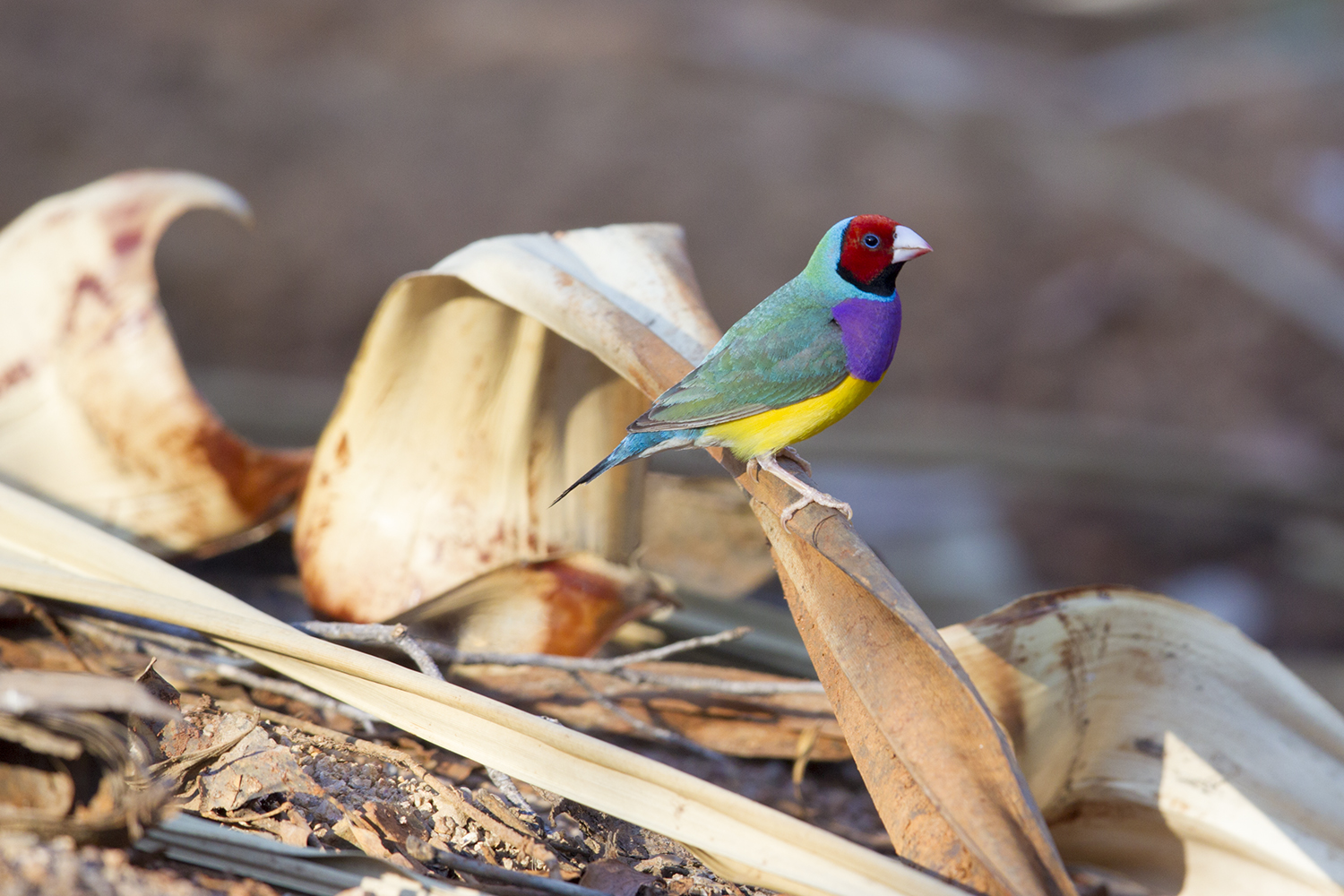
Gouldian Finch - Red-Faced Male (Erythrura gouldiae)
Our most colourful and sought after bird here in the Northern Territory the Gouldian Finch, there are three separate forms of the species: a common black-headed form; a red-headed form; and a seldom-seen yellow-headed form. Apart from the different colours of the feathering on their faces, the plumage of the three forms is the same. These spectacular finches can sometimes be seen on our day tours but your best chance to see them is on our multi day tours down to Pine Creek and Katherine.
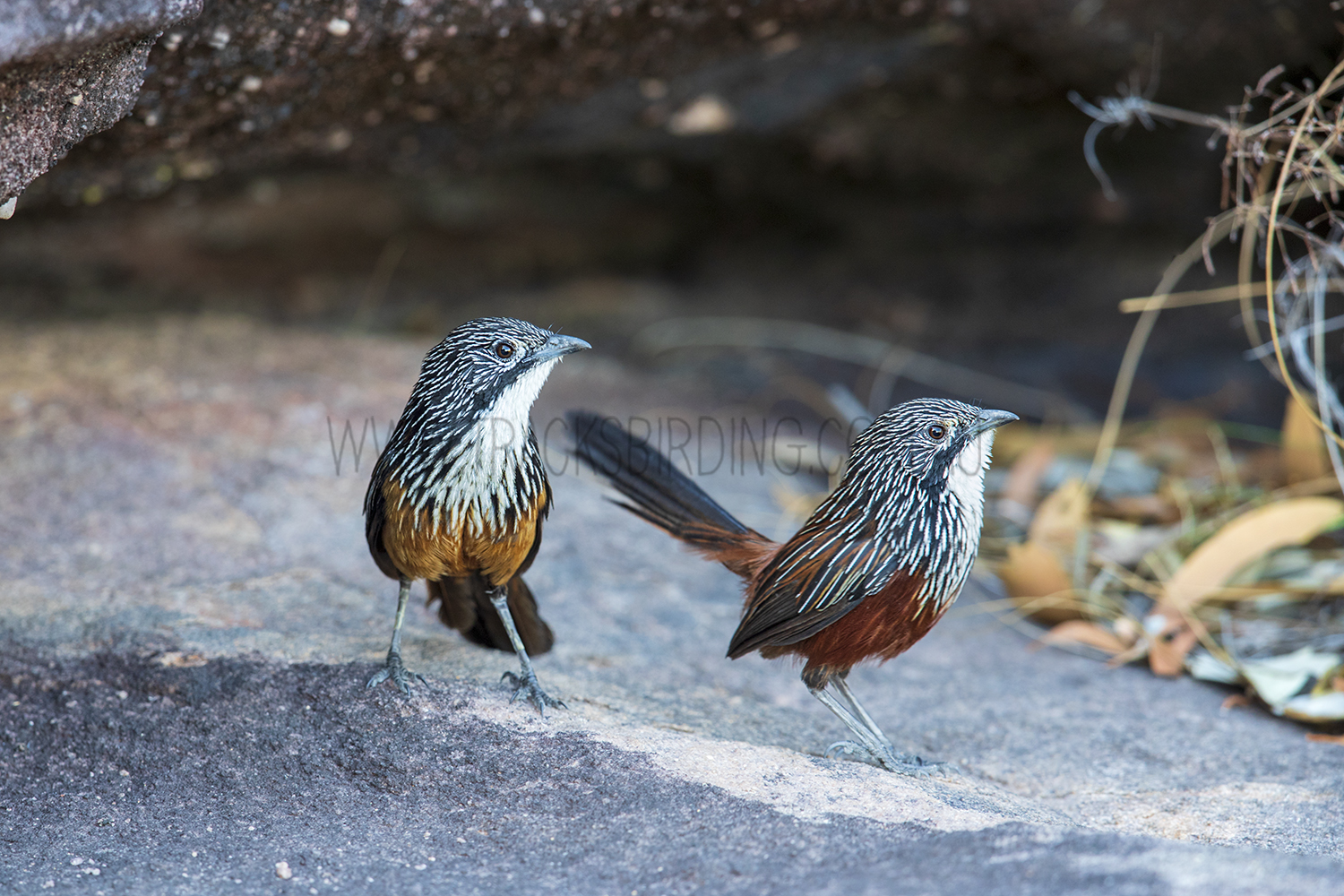
White-throated Grasswren (Amytornis woodwardi)
The White-throated Grasswren (Amytornis woodwardi) or Yilingkirrkirr is a very special species of bird in the Maluridae family, it is endemic to the Sandstone Escarpment country of West Arnhemland and has become just about impossible to locate by the average birder due to loss of habitat. This incredible difficult and beautiful species of bird requires a specific tour which I am currently trying to organise, keep an eye on Facebook.
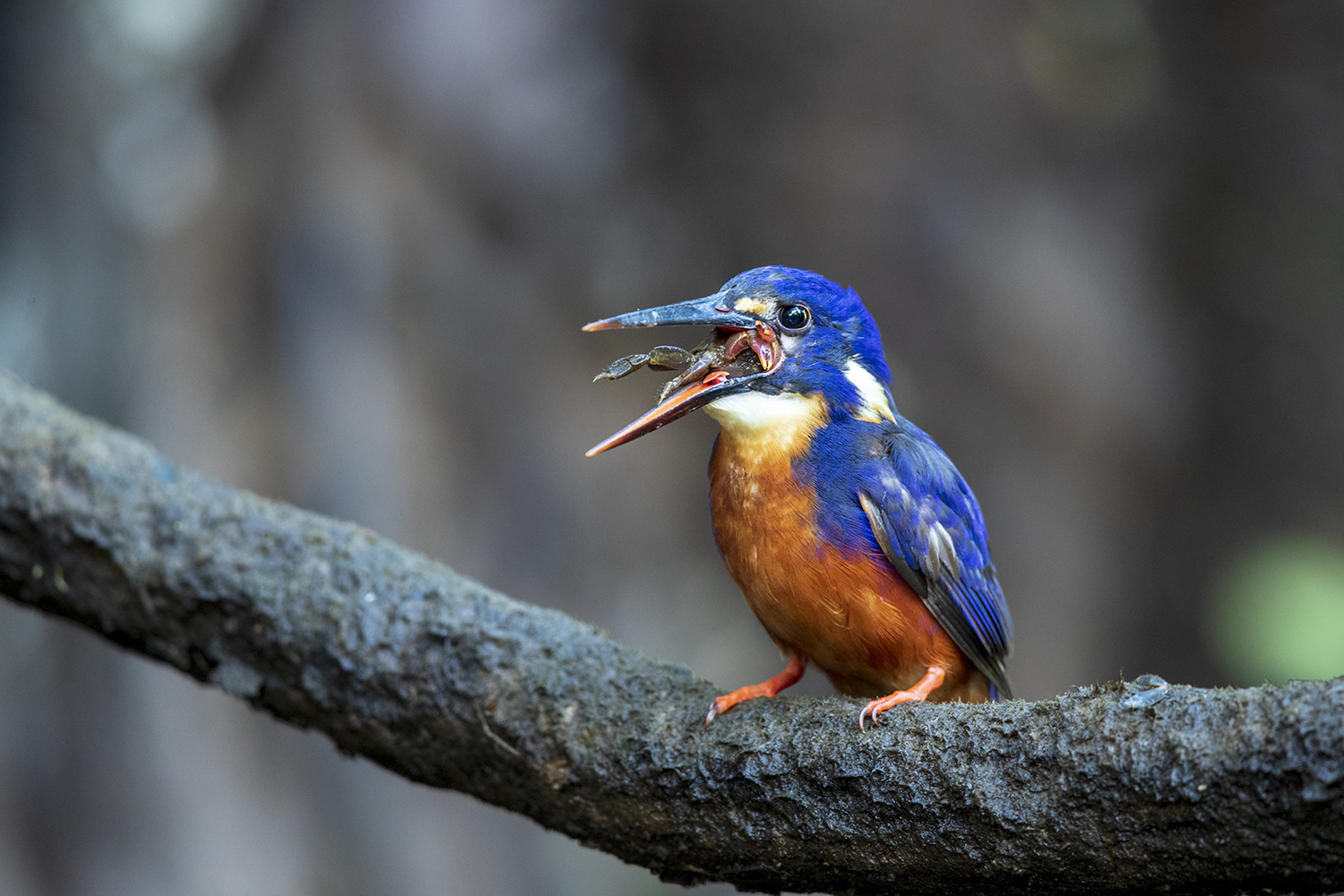
Azure Kingfisher (Ceyx azureus ruficollaris)
Azure Kingfisher is one of the smallest and most dazzling Kingfishers in Australia. Azure Kingfishers inhabit vegetation beside Fresh & Saltwater waterways , where it often perches on low, overhanging branches, searching for its prey of fish, captured by shallow plunging into the water. There is a chance to see Azure Kingfishers on any of our tours including the Day Trips.
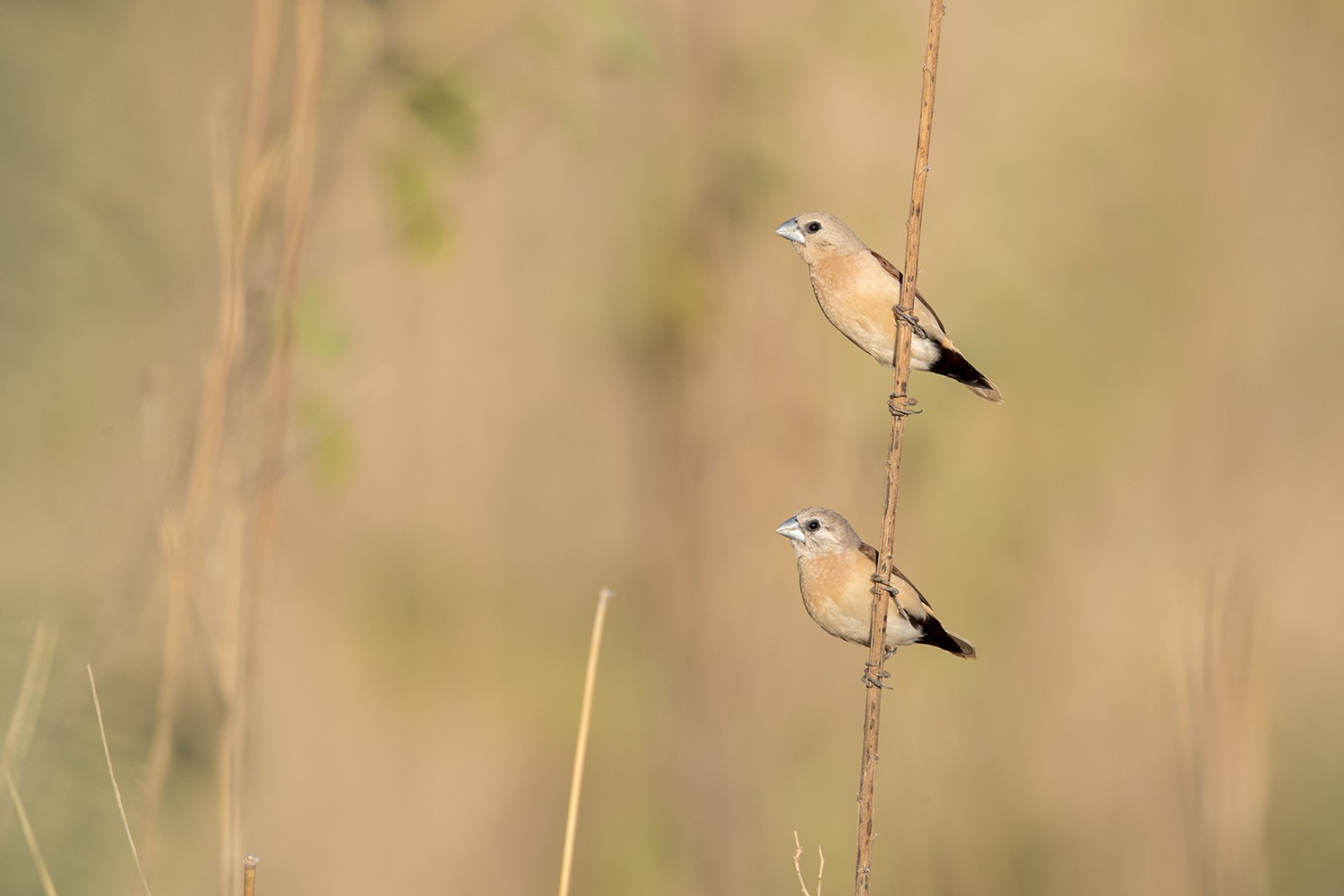
Yellow-rumped Mannikin (Lonchura flaviprymna)
The Yellow-rumped Mannikin which is also known as the 'Yellow-rumped Munia is up there with the hardest of the Finches to find, they are nomadic and local numbers fluctuate hugely every year. They can usually be found on our Victoria River / Timber Creek Tours.
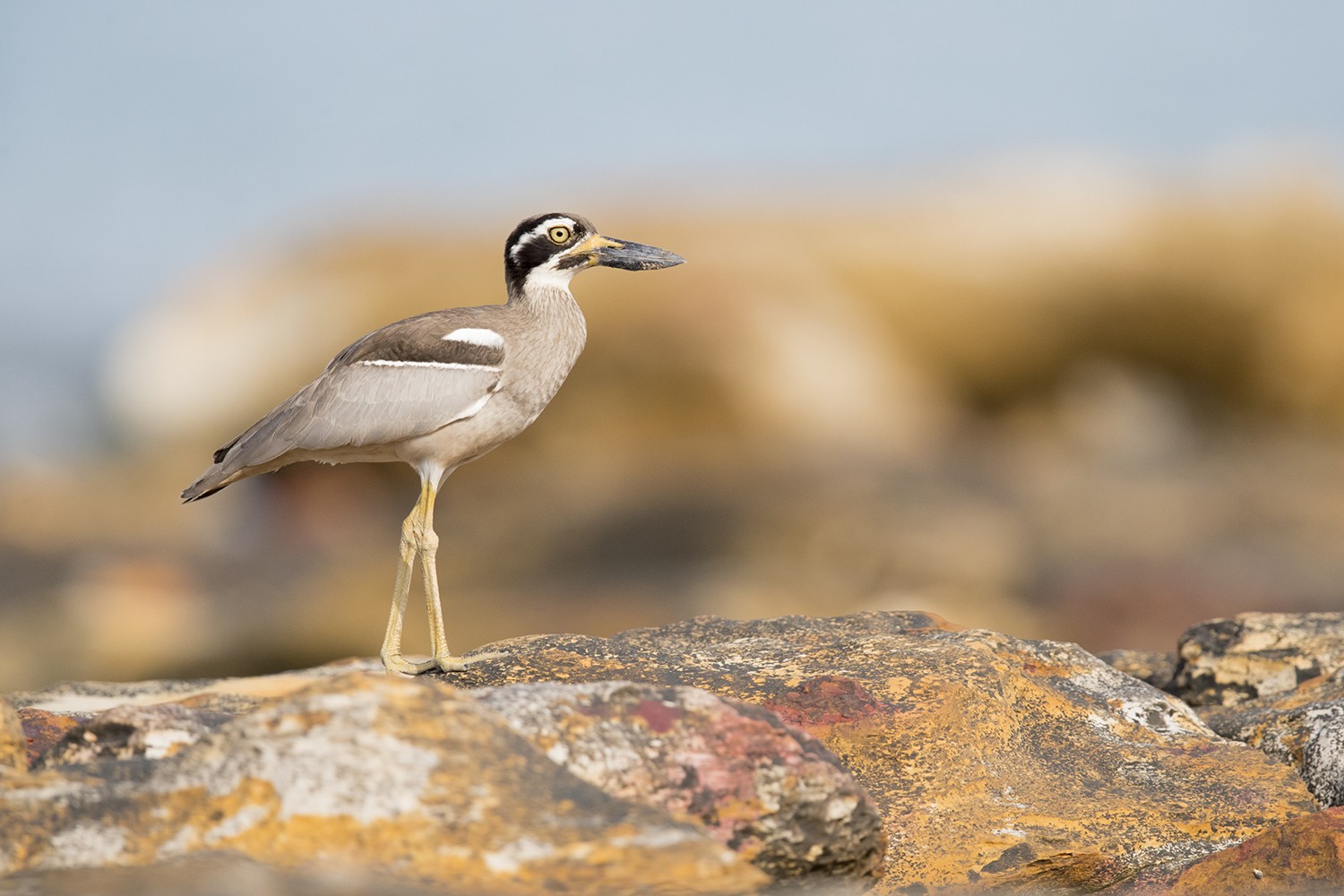
Beach Stone-curlew (Esacus magnirostris)
The beach stone-curlew (Esacus magnirostris) is also known as beach thick-knee is a large, ground-dwelling bird that occurs in Australasia, the islands of South-east Asia. These shy birds can be found around the beaches or Darwin so we have a chance to see them on any of our tours. The Beach Stone-curlew is less nocturnal than most stone-curlews, and can sometimes be seen foraging by daylight, moving slowly and deliberately, with occasional short runs.
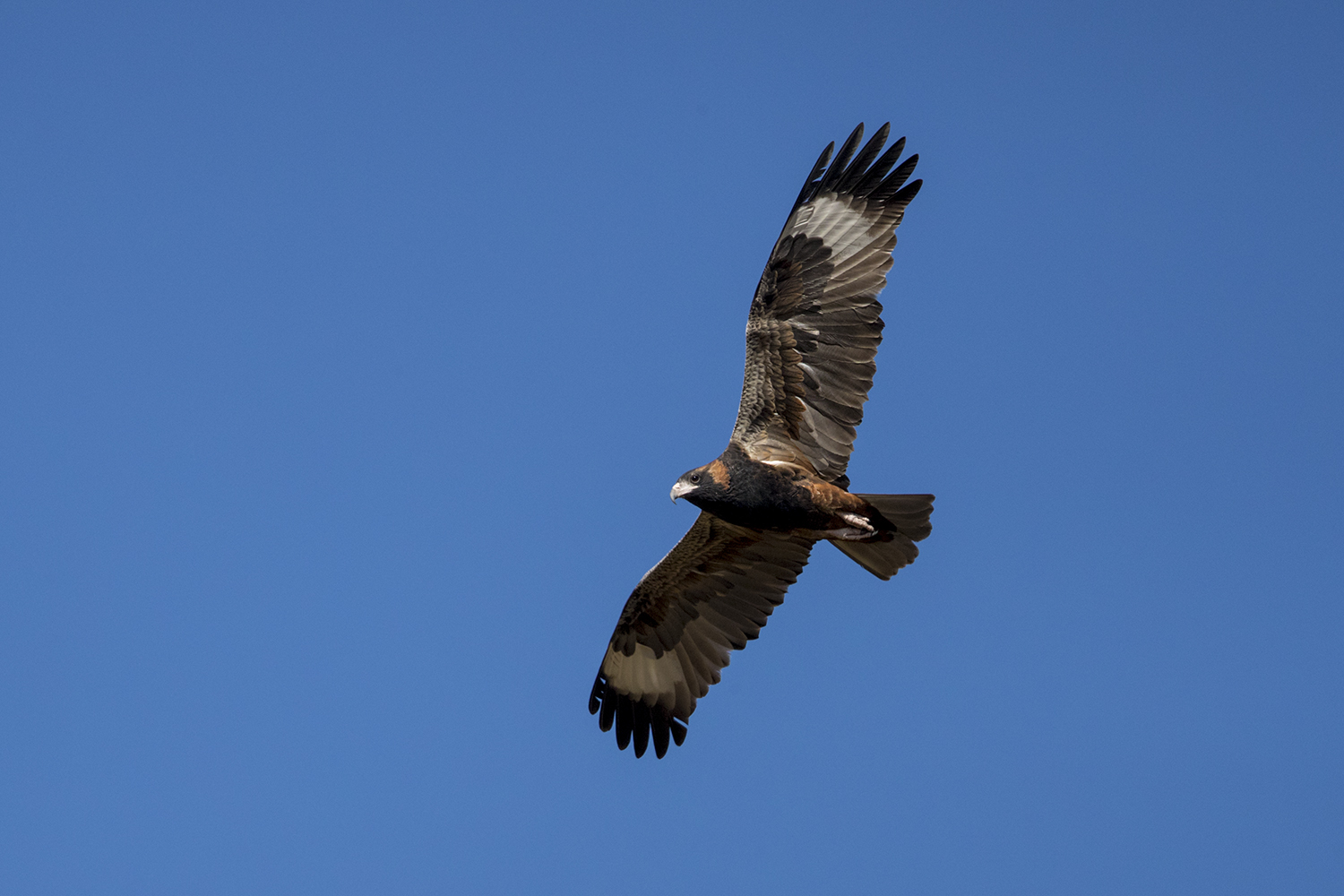
Black-breasted Buzzard (Hamirostra melanosternon)
The Black-breasted Buzzard (Hamirostra melanosteron) is a large raptor endemic to mainland Australia. The Black-breasted Buzzard is famous for its special skill in cracking eggs, Emu eggs being one of its favourites. The Black-breasted Buzzard is easily identified by it distinctive thick white panels near the end of the wings. They can be found on any of our tours, you just never know when one is going to fly by.
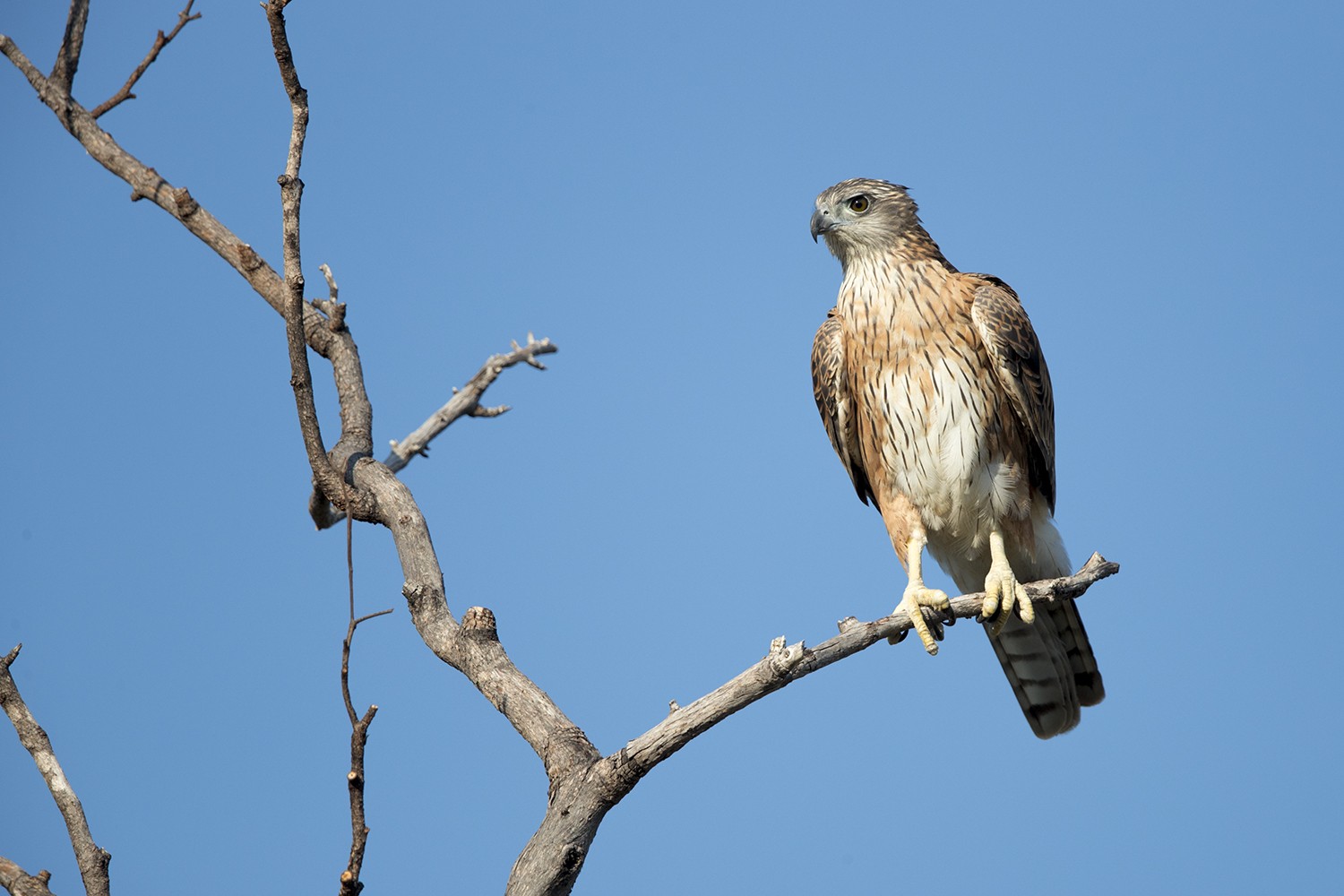
Red Goshawk - Female (Erythrotriorchis radiatus)
The Red Goshawk is Australia's rarest bird of prey, with an estimated population of only around 2000 individuals it is usually very high on a lot of birders and photographers wish lists. We have a slight chance for this bird on our tours that venture into Kakadu National Park.
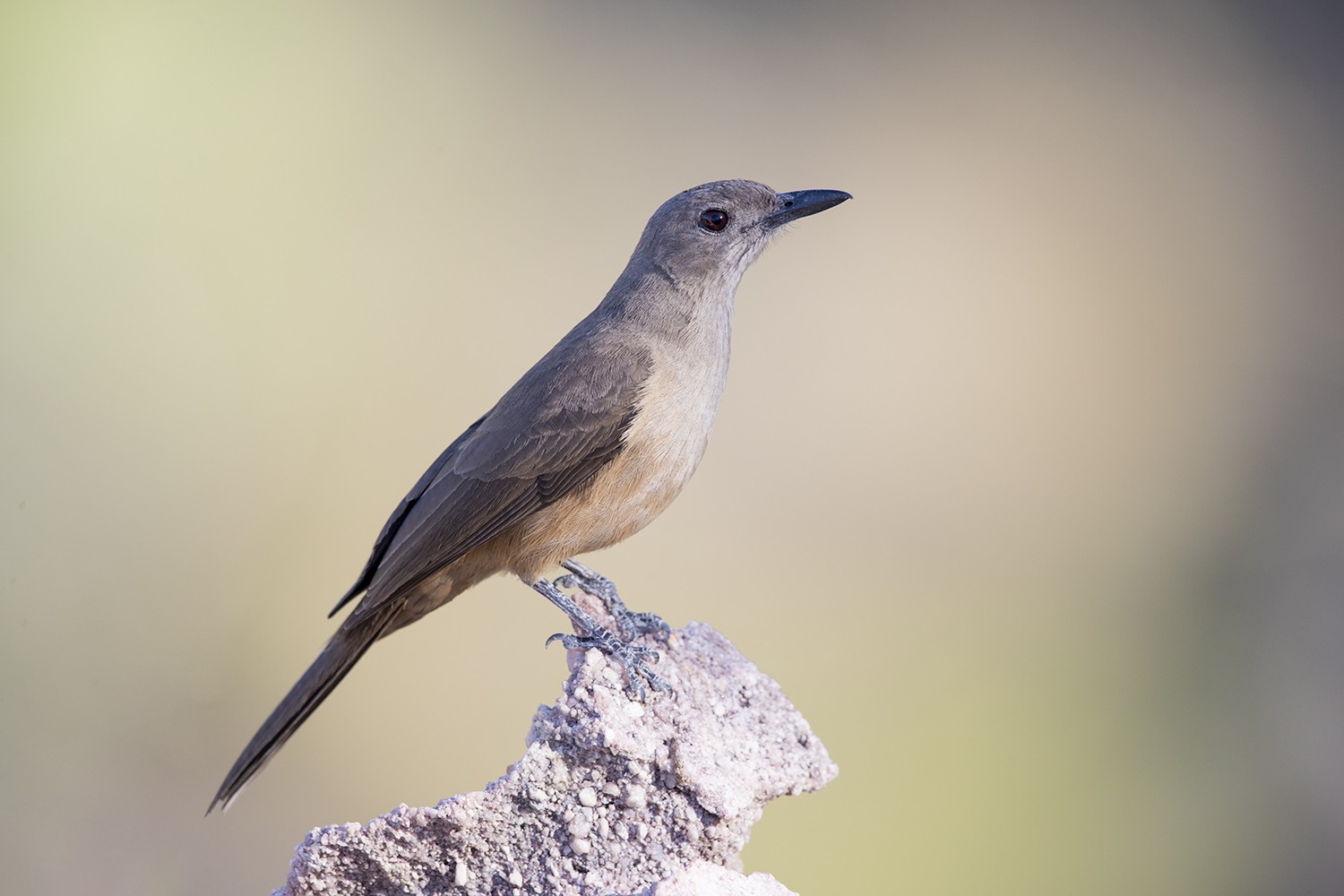
Sandstone Shirke-thrush (Colluricincla woodwardi)
Another endemic bird to the Top End of Australia the Sandstone Shrike-thrush inhabits sandstone regions and lives in sandstone cliffs and gorges, among boulders on ridges and in crevices. They forages alone or in pairs among the sandstone rocks for small lizards, grasshoppers and spiders. They have an amazing call that can usually be heard any time we visit the escarpments of Kakadu.
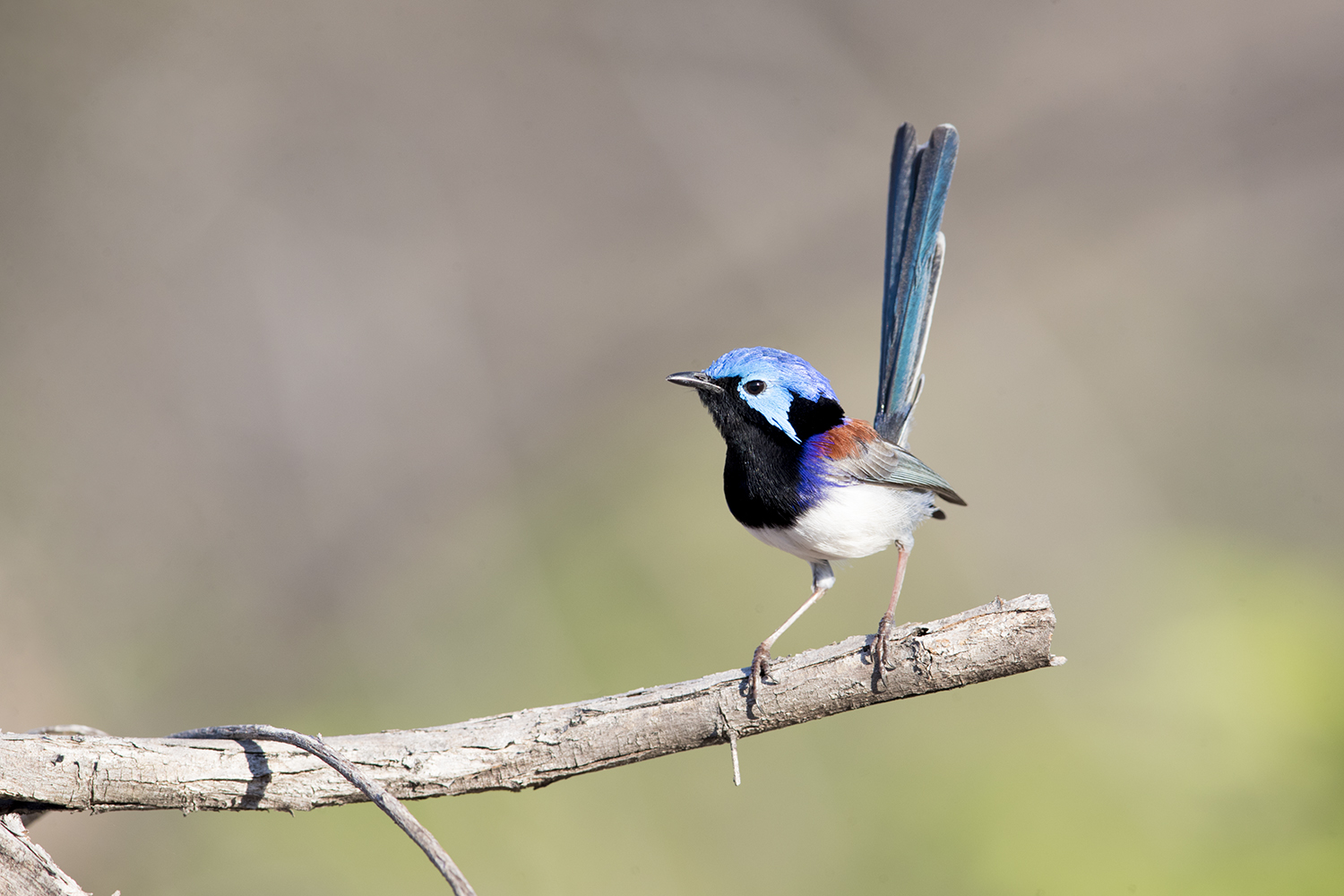
Variegated Fairy-wren - Male (Malurus lamberti dulcis)
Here in the Top End we have a unique subspecies of Variegated Fairy-wren called Dulcis or Lavender-flanked Fairywren, this fairywren is only found up on the Sandstone escarpments of Arnhemland and Kakadu is one of my favorite birds to photograph, probably because not many people have actually seen them.
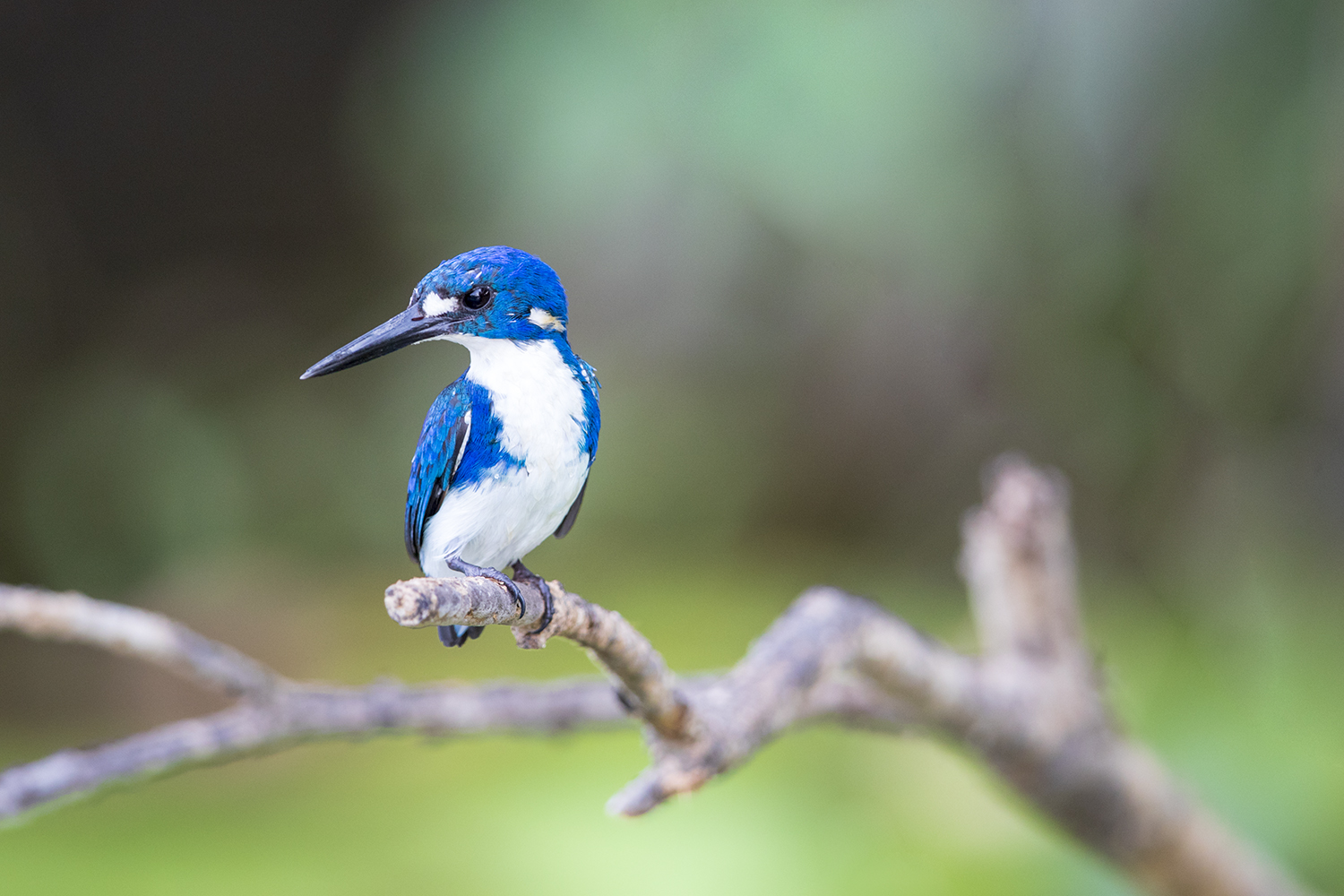
Little Kingfisher (Ceyx ramsayi)
The Little Kingfisher is the smallest Kingfisher in Australia and can be a challenge to find, they inhabit open forest, woodland, swamps and mangroves in the Northern Territory. There is a chance to see Azure Kingfishers on any of our tours including the Day Trips.
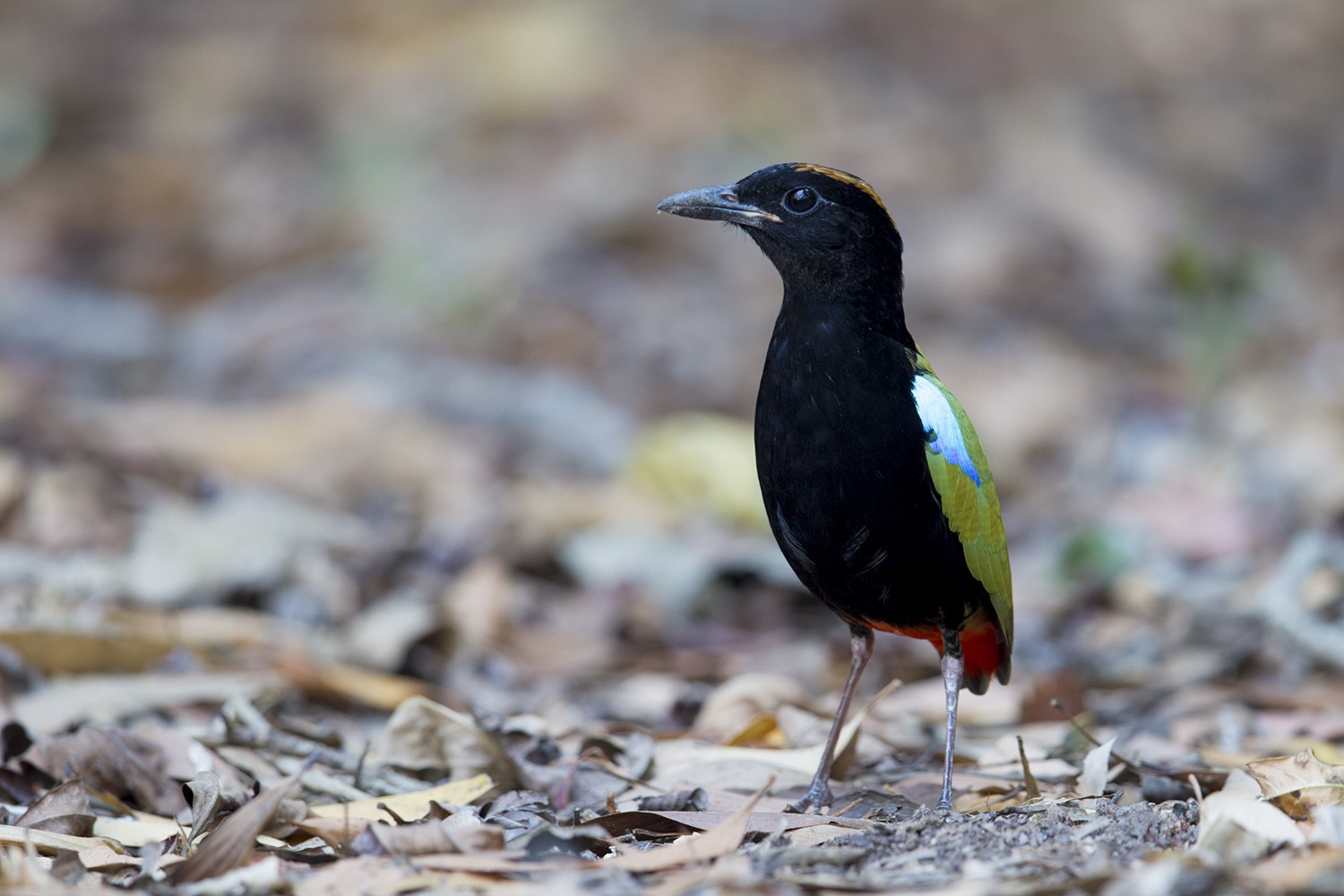
Rainbow Pitta (Pitta Iris)
One of the highlights when visiting Darwin is the Rainbow Pitta which is endemic to the monsoon rainforests of the wet–dry tropics of north-western Australia. Rainbow Pitta feed on worms, snails, insects and their larvae, also spiders and millipedes. This very elusive bird can usually be seen on any of our tours including the Day Trips.
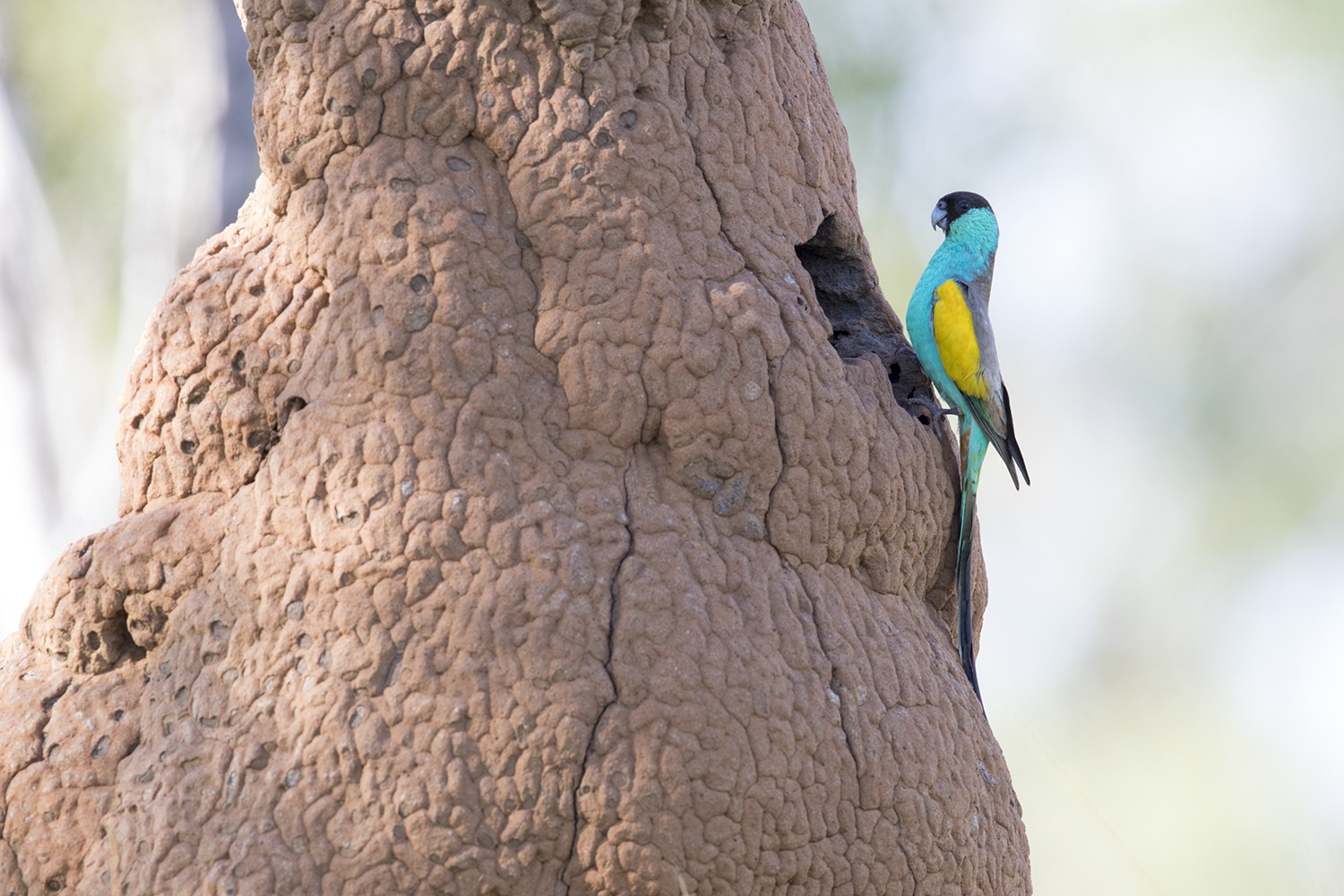
Hooded Parrot, Male (Psephotus dissimilis)
The Hooded Parrot is an endemic Parrot found only in the Northern Territory. It is found in savannah and open woodland and is one of two extant species that breed in termite mounds. The diet of the Hooded Parrot consists mainly of seeds, berries and vegetables. These beautiful Parrots can sometimes be found feeding on the side of roads near Katherine. Our best chance to see Hooded Parrots is on our multi day tours down to Pine Creek and Katherine.
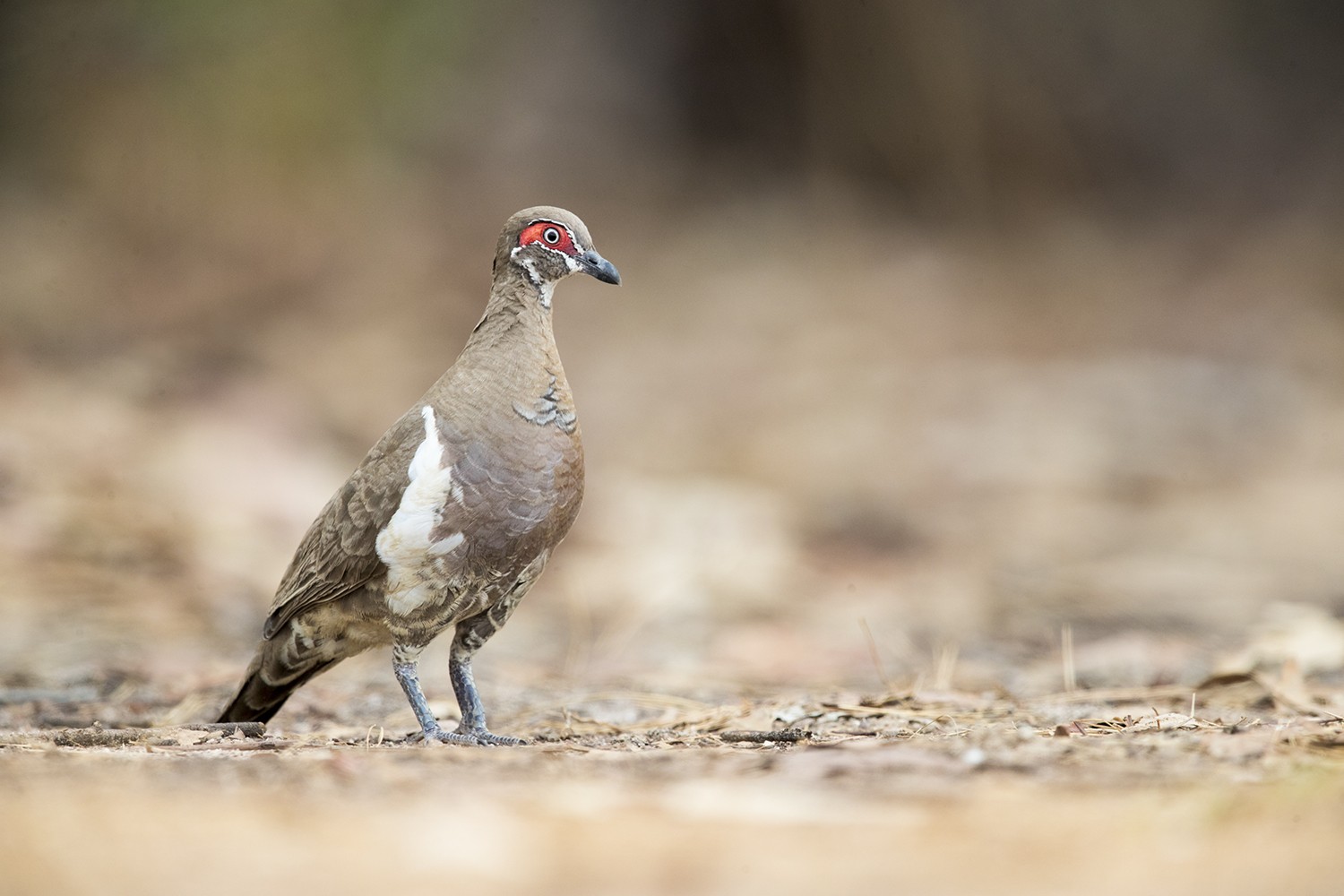
Partridge Pigeon (Geophaps smithii)
The Partridge Pigeon is a ground-dwelling pigeon, more likely to scurry away than fly when disturbed, but will sometimes eject from the grass with loudly whirring wings when it feels threatened. Its natural habitats are subtropical or tropical dry shrubland and subtropical or tropical dry lowland grassland. It is threatened by habitat loss but we have a good chance at seeing it on any of our tours that go into Kakadu National Park.
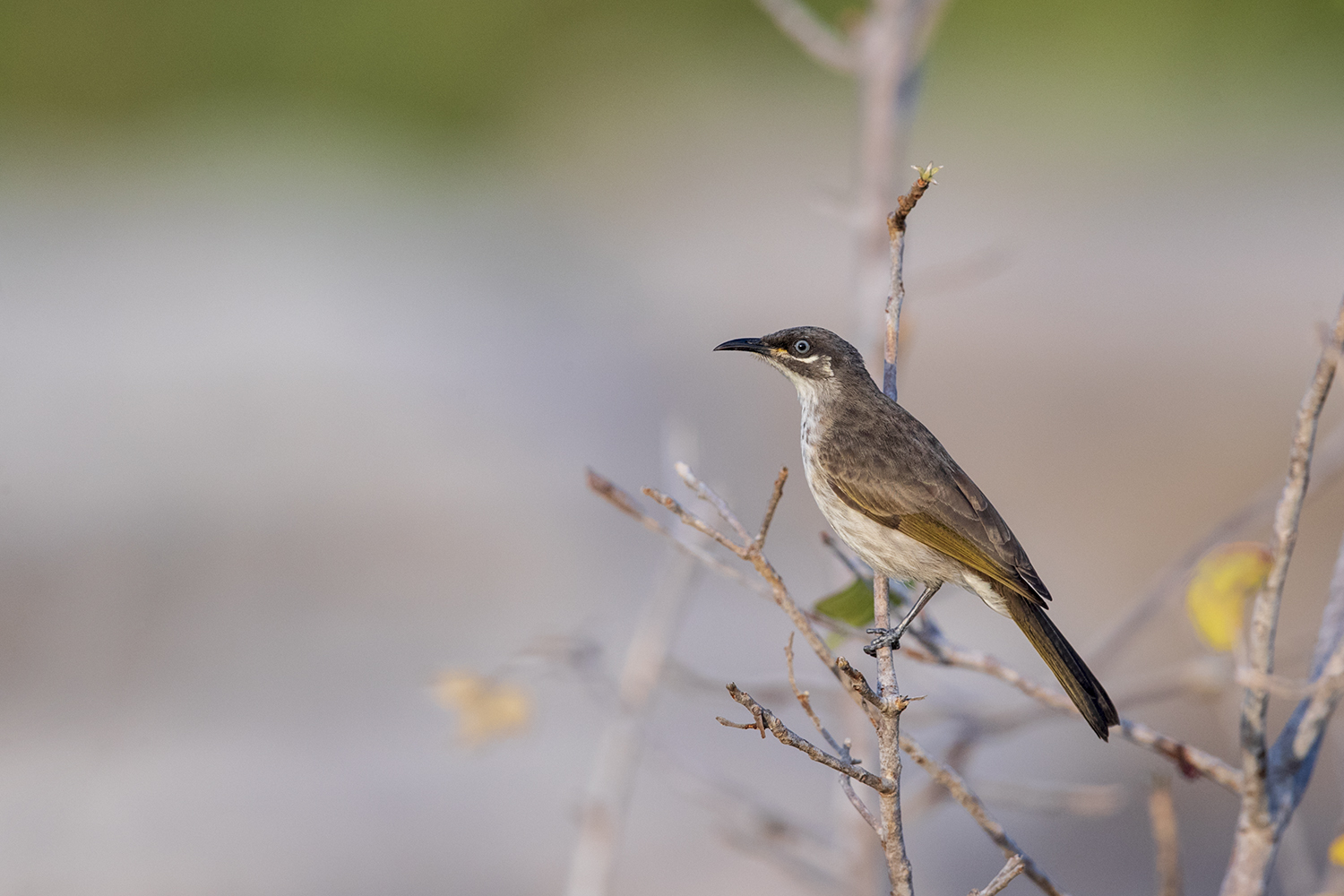
White-lined Honeyeater (Meliphaga albilineata)
The White-lined Honeyeater is an endemic Honeyeater which is only found near the Sandstone Escarpment and Gorges of the Arnhemland Plateau. This usually quiet and inconspicuous bird can sometimes be a challenge to find unless it is singing it's very melodic and obvious song. We have a chance at seeing the White-lined Honeyeater on any of our tours that go into Kakadu National Park.
Northern Rosella (Platycercus venustus)
Another highlight when visiting Darwin is the Northern Rosella which can be found near open forest and woodlands throughout the Northern Territory. They are usually seen in pairs or small parties. This reasonably common parrot can usually be seen on any of our tours including the Day Trips.
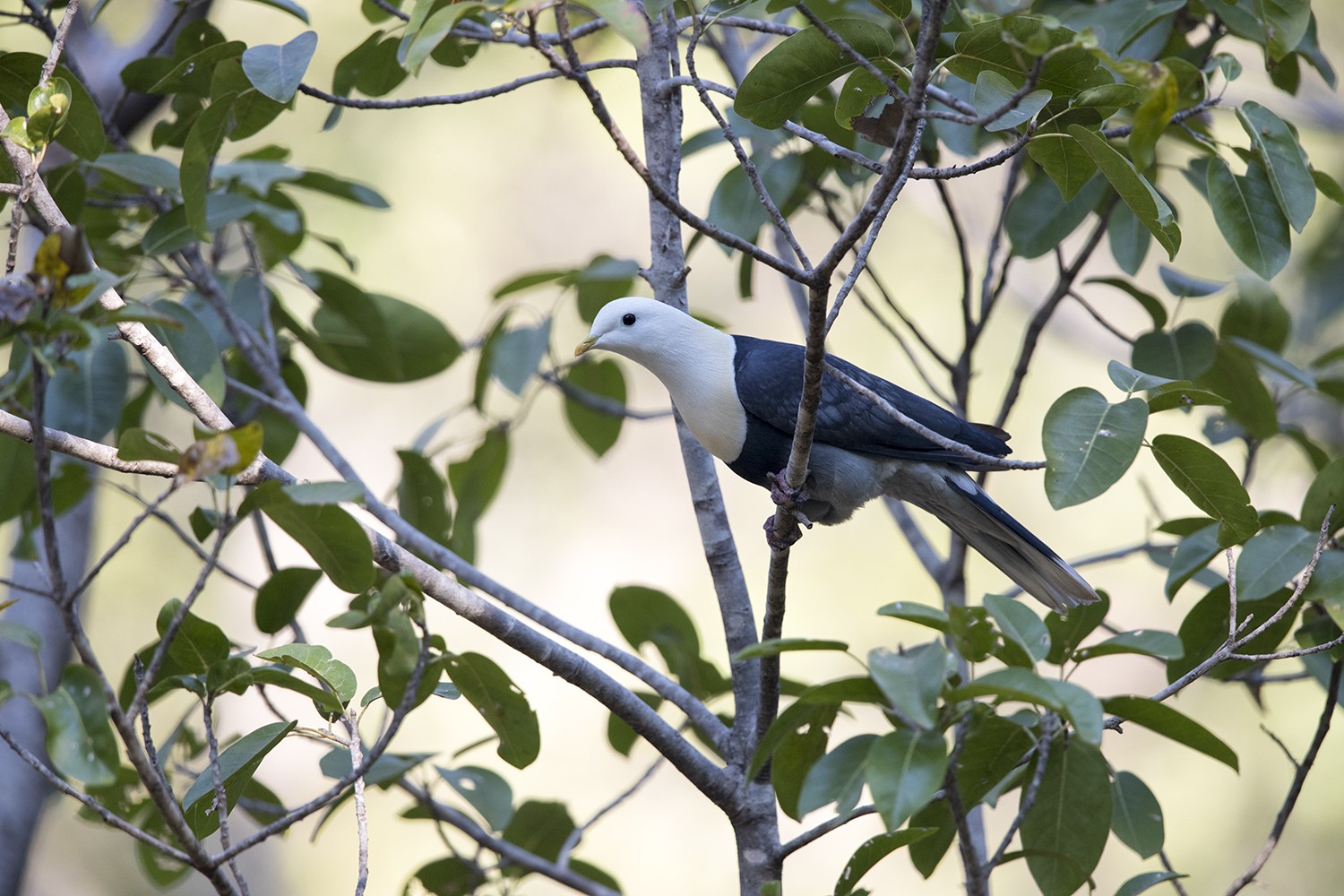
Banded Fruit-dove (Ptilinopus cinctus alligator)
The Banded Fruit-dove is endemic to the Northern Territory and this usually quiet and inconspicuous bird can be very challenging to find. They are only found in the small rainforest pockets on the Arnhemland Plateau and can very shy and often very well hidden amongst the foliage of the rainforest. We have a chance at seeing the Banded Fruit-dove on any of our tours that go into Kakadu National Park.
Chestnut-quilled Rock-Pigeon (Petrophassa rufipennis)
The Chestnut-quilled Rock-Pigeon is an endemic bird only found on the sandstone cliff, gorges and escarpments of the Arnhemland Plateau.We have a chance at seeing the Chestnut-quilled Rock-pigeon on any of our tours that go into Kakadu National Park.
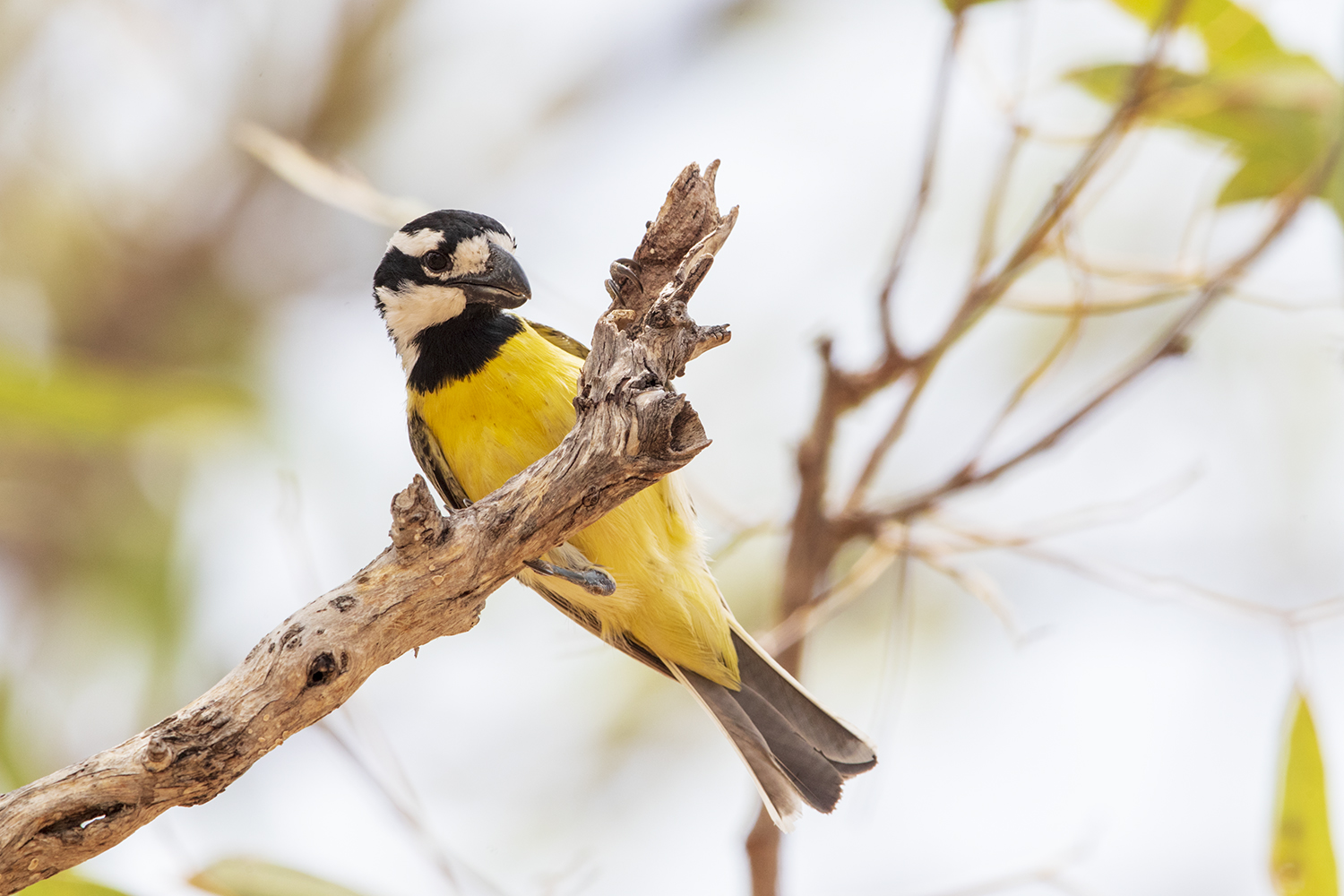
Northern Crested Shrike-tit - Male (Falcunculus frontatus whitei)
The Northern Shrike-tit is one of the Northern Territories rarest birds and can be a real challenge to see, this Northern subspecies of the Crested Shrike-tit is sometimes considered to be a distinct species. The Northern subspecies of the Crested Shrike-tit inhabits eucalypt open woodlands, such as those dominated by Bloodwood, Eucalyptus opaca, Darwin Box E. tectifica and Roughleaf Cabbage Gum E. confertiflora. Our only chance of seeing the Northern Shrike-tit is on one of our multi day trips down to Katherine and can take up a whole morning trying to find.
Purple-crowned Fairy-wren (Malurus coronatus coronatus)
The Purple-crowned Fairy-wren is the largest of all 13 species of Fairy-wren and is only found here in Northern Australia, it is also one of my favourites. On our tours we have a chance of seeing this amazing Fairy-wren when we head over to the Victoria River Region.
Mangrove Robin (Peneonanthe pulverulenta alligator)
The Mangrove Robin inhabits the local mangroves around Darwin, the Mangrove Robin has a very mournful and unique call which helps in locating it. They are most active in the early morning or late evening and can sometimes be seen on any of our tours including any of the Day Trips.
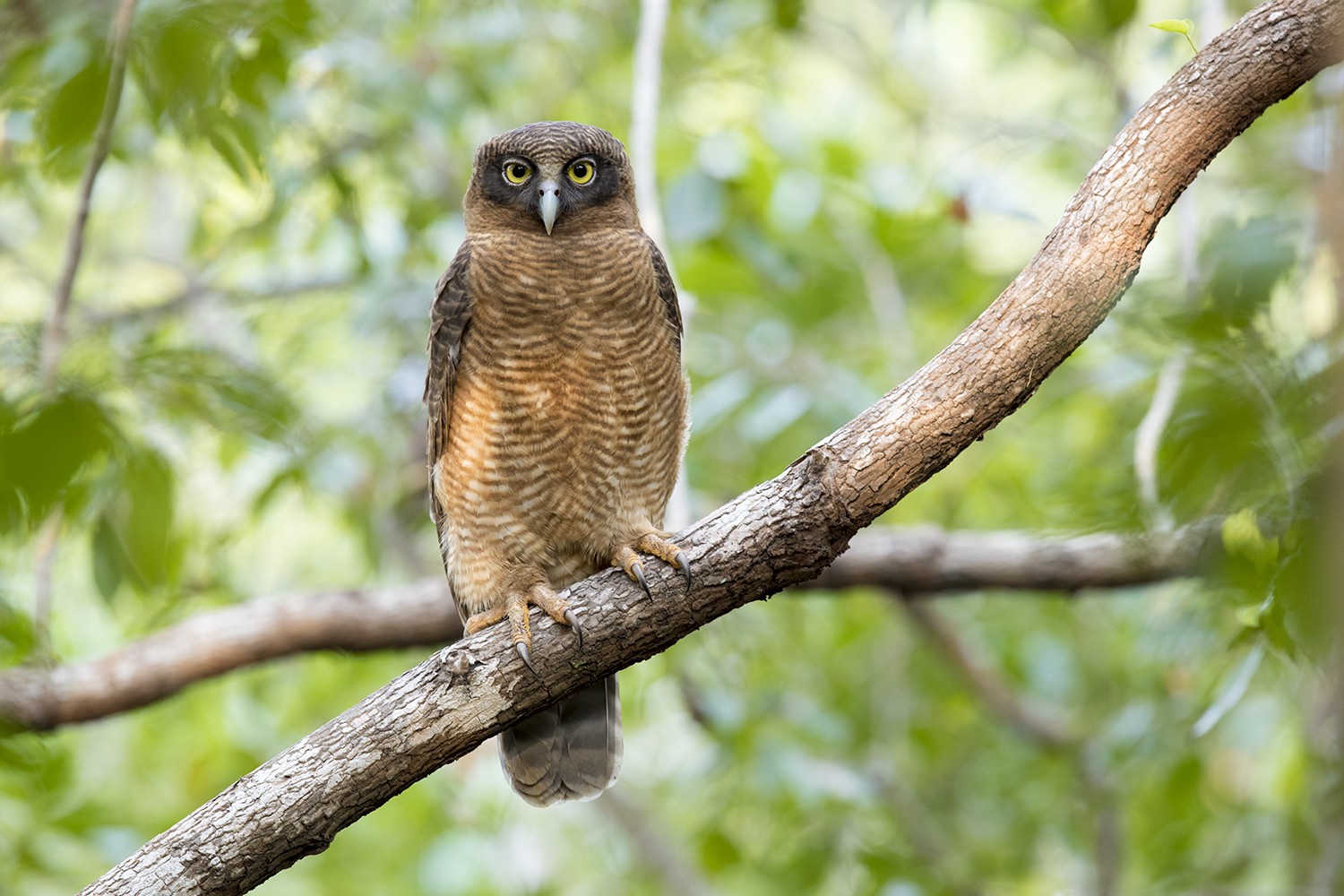
Rufous Owl (Ninox rufa)
The Rufous Owl is the Northern Territory's largest Owl, often growing 46–57 centimetres in length with a wingspan over 1 m. The Rufous Owl is a skilled and powerful hunter, capable of capturing a wide variety of prey including possums and flying foxes. Rufous Owls occur either singularly or in pairs in a large territory and usually roosts in the same tall leafy tree during the day. They are rare but can sometimes turn up around Darwin City and if they are around seen on any of our tours.
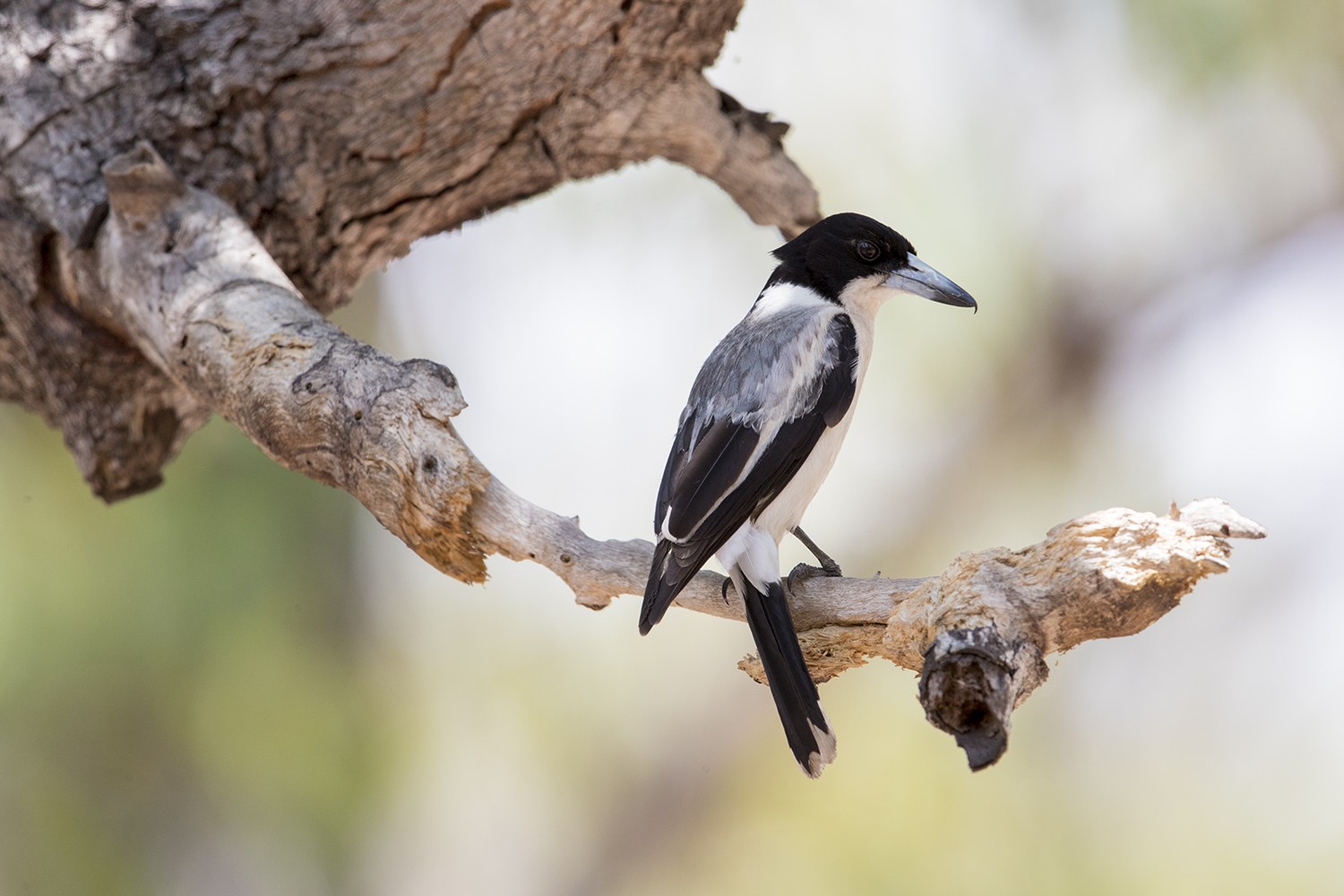
Silver-backed Butcherbird (Cracticus torquatus argenteus)
The Silver-backed Butcherbird is a unique species to the Top End and looks very similar to the Grey butcherbird, its back is lighter and more silvery. This species is snappy and fearless, diving at humans and dogs near the nest. These can be found on any of our extended tours.
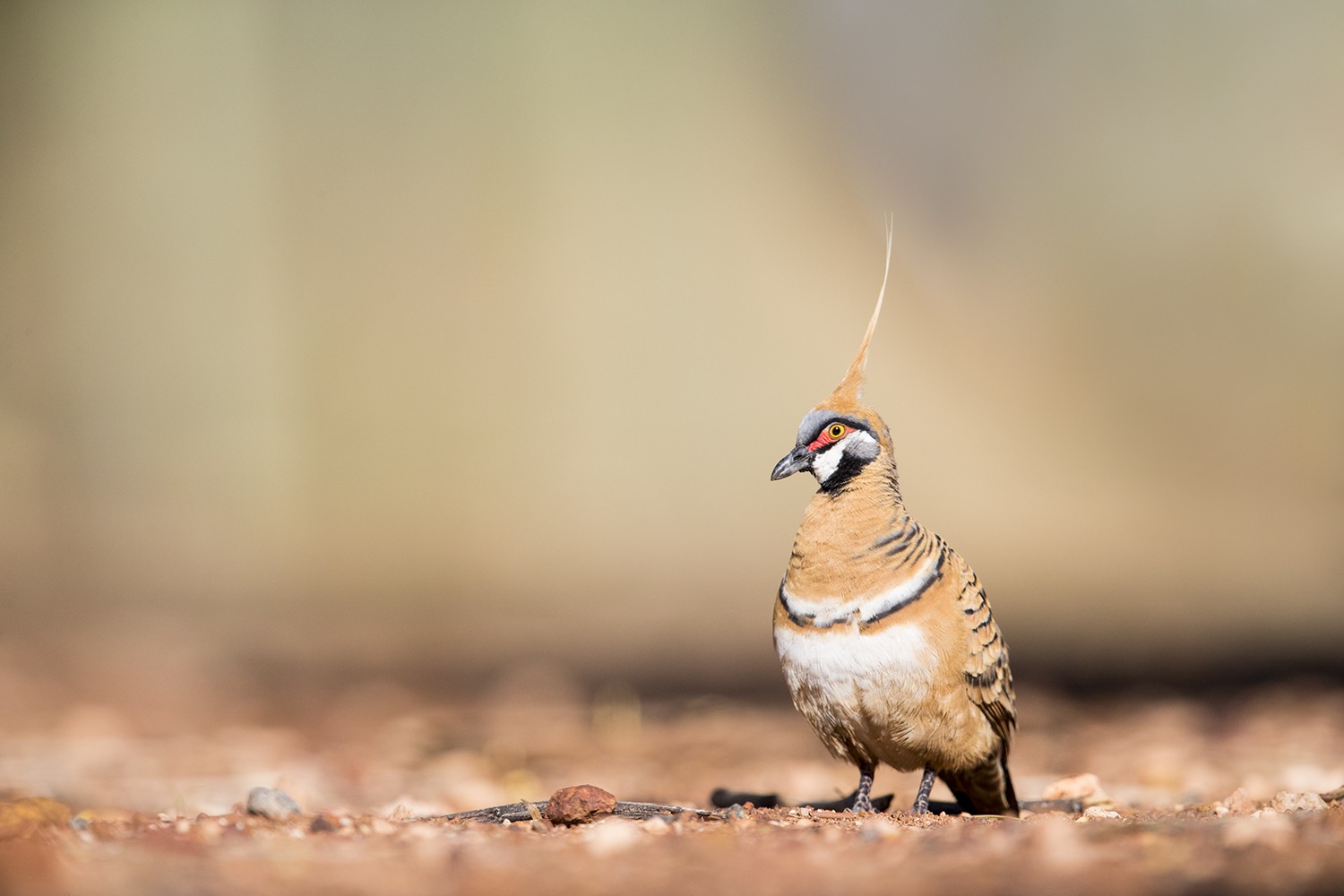
Spinifex Pigeon (Geophaps plumifera leucogaster)
The Spinifex pigeon (Geophaps plumifera), also known as the plumed-pigeon, is one of four endemic Australian bird species within the Geophaps genus. There are three subspecies throughout Australia and we have the chance of seeing the North-western Spinifex Pigeon (north-western white-bellied subspecies) Geophaps plumifera plumifera on our extended tour to the Victoria River and Timber Creek regions.
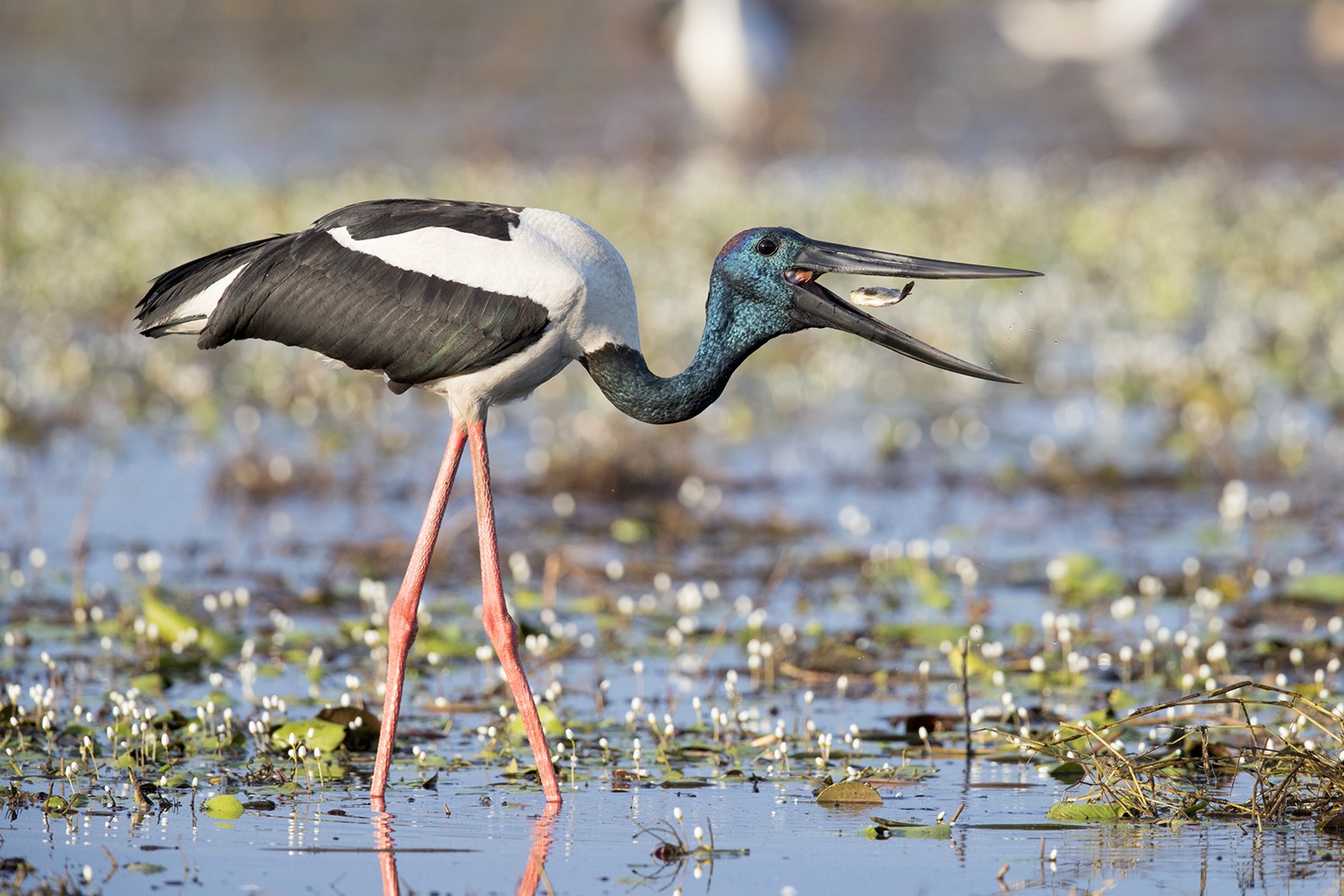
Black-necked Stork (Ephippiorhynchus asiaticus australis)
The Black-necked stork (Ephippiorhynchus asiaticus) is a tall long-necked wading bird in the stork family. It is a resident species across the Indian Subcontinent and Southeast Asia with a disjunct population in Australia. Adult birds of both sexes have a heavy bill and are patterned in white and glossy blacks, but the sexes differ in the colour of the iris. In Australia, it is sometimes called a Jabiru although that name refers to a stork species found in the Americas.
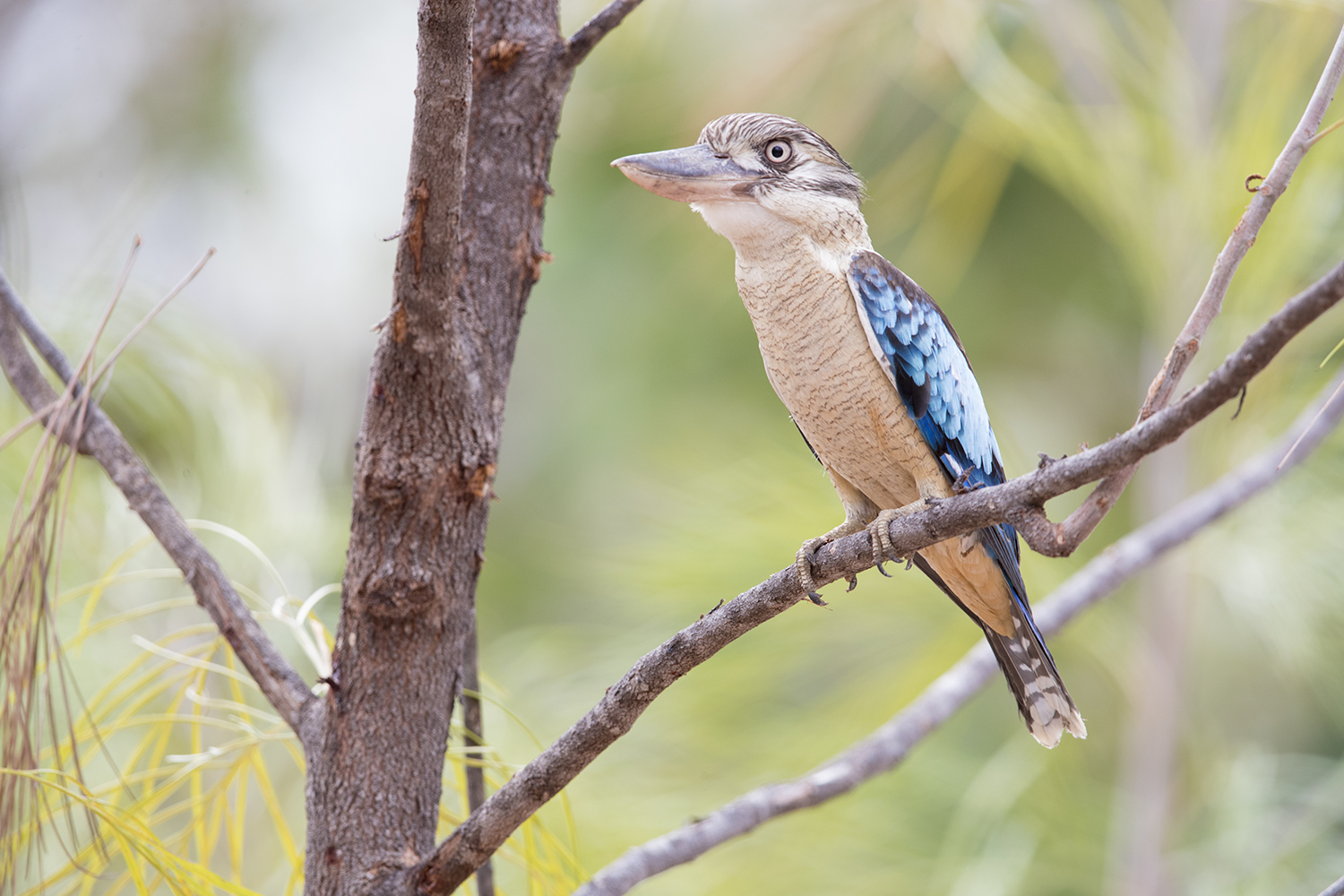
Blue-winged Kookaburra (Dacelo leachii leachii)
The Blue-winged Kookaburra (Dacelo leachii) is a large species of kingfisher native to northern Australia and southern New Guinea. Measuring around 40 cm, it is slightly smaller than the more familiar Laughing Kookaburra. It has cream-coloured upper- and underparts barred with brownish markings. It has blue wings and brown shoulders and blue rump. It is sexually dimorphic, with a blue tail in the male, and a rufous tail with blackish bars in the female.
Buff-sided Robin's (Poecilodryas cerviniventris)
The Buff-sided Robin (Poecilodryas cerviniventris) is a small diurnal insectivorous perching bird in the Petroicidae family, a group commonly known as the Australo-Papuan or Australasian robins. It is also known as the Buff-sided Fly-robin, Buff-sided Shrike-robin. The Buff-sided robin is endemic to northern Australia where it primarily occurs in riparian forests and monsoonal vine thickets from the Kimberly region of Western Australia to the north-west Queensland Gulf of Carpentaria.
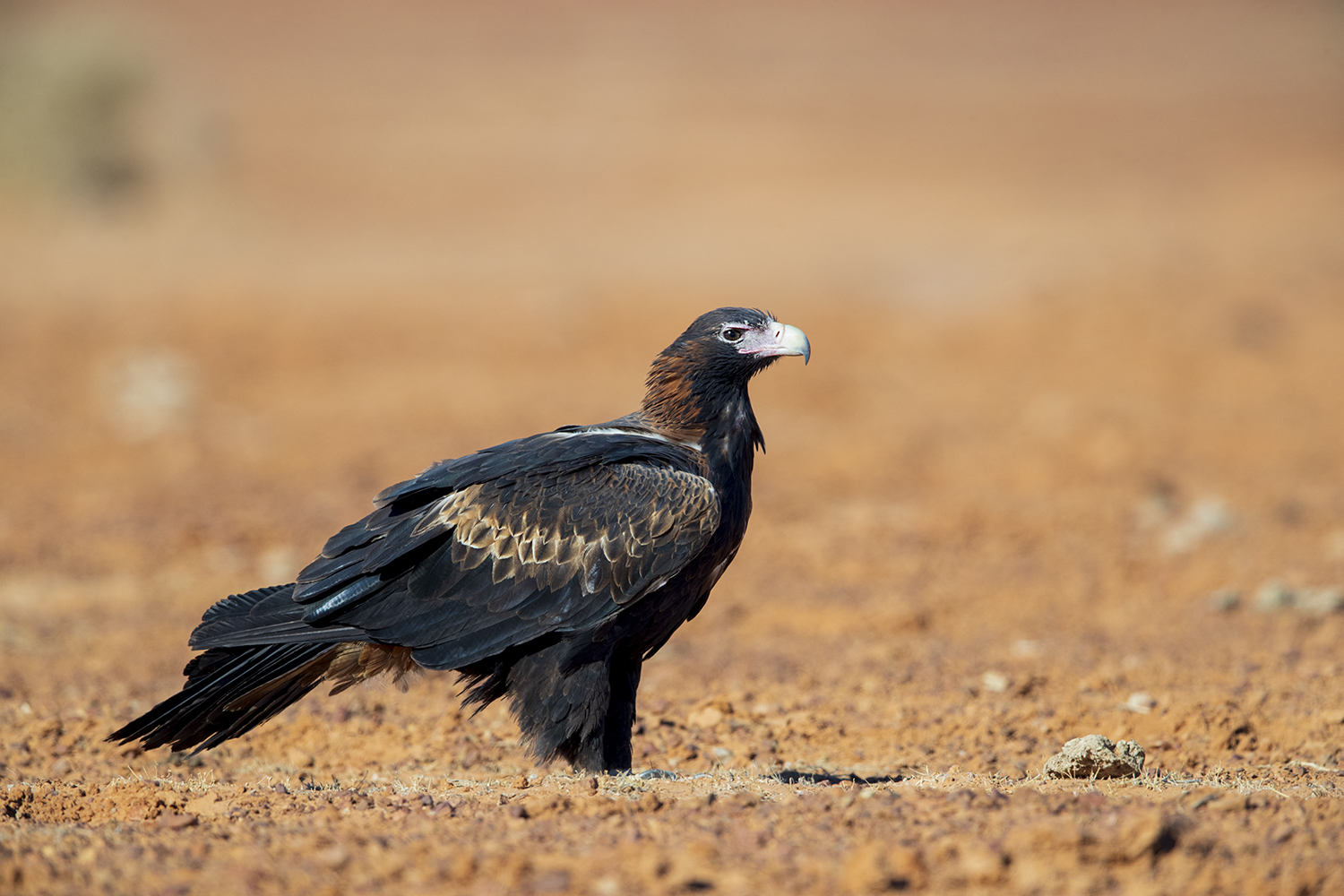
Wedge-tailed Eagle (Aquila audax)
Wedge-tailed Eagles which is Australia's largest bird of prey are found throughout Australia, including Tasmania, and southern New Guinea in almost all habitats, though they tend to be more common in lightly timbered and open country in southern and eastern Australia. In New Guinea, the birds can be found in the Trans Fly savanna and grasslands. We have the chance of seeing this impressive bird on any of my Tours.
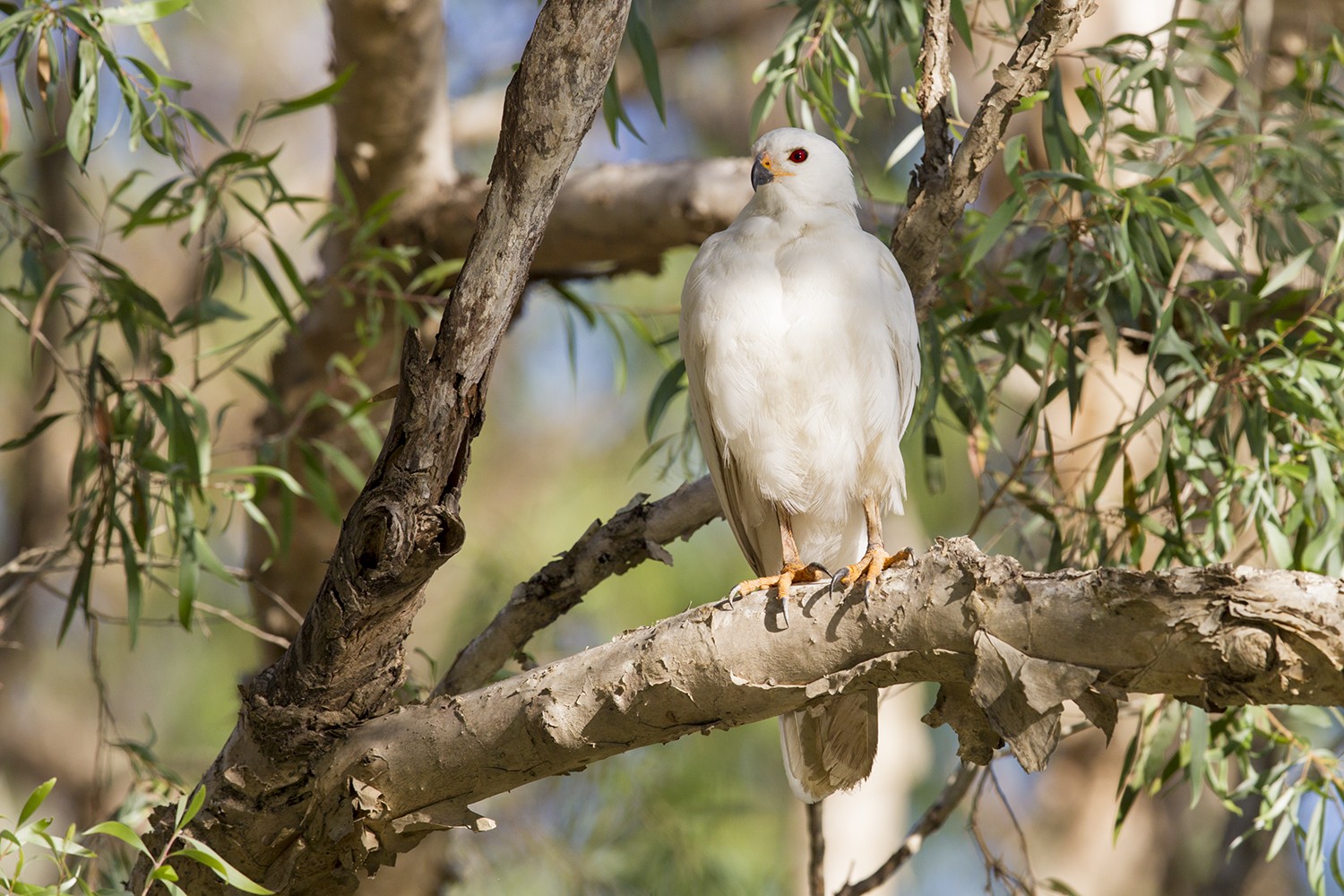
Grey Goshawk (Accipiter novaehollandiae)
The Grey Goshawk (Accipiter novaehollandiae) is a medium-sized bird of prey, which has two different colour morphs. The grey morph has a grey head and upper parts, with white underparts barred grey on the chest. The rounded wings are grey above, white below, and have darker wingtips. The medium length tail is grey above and white below, barred grey. The white morph is pure white all over and is often known as the White Goshawk. Both morphs have a dark red eye and yellow legs and feet. However, this species is so variable in colour and size that it can be known as the Variable Goshawk.
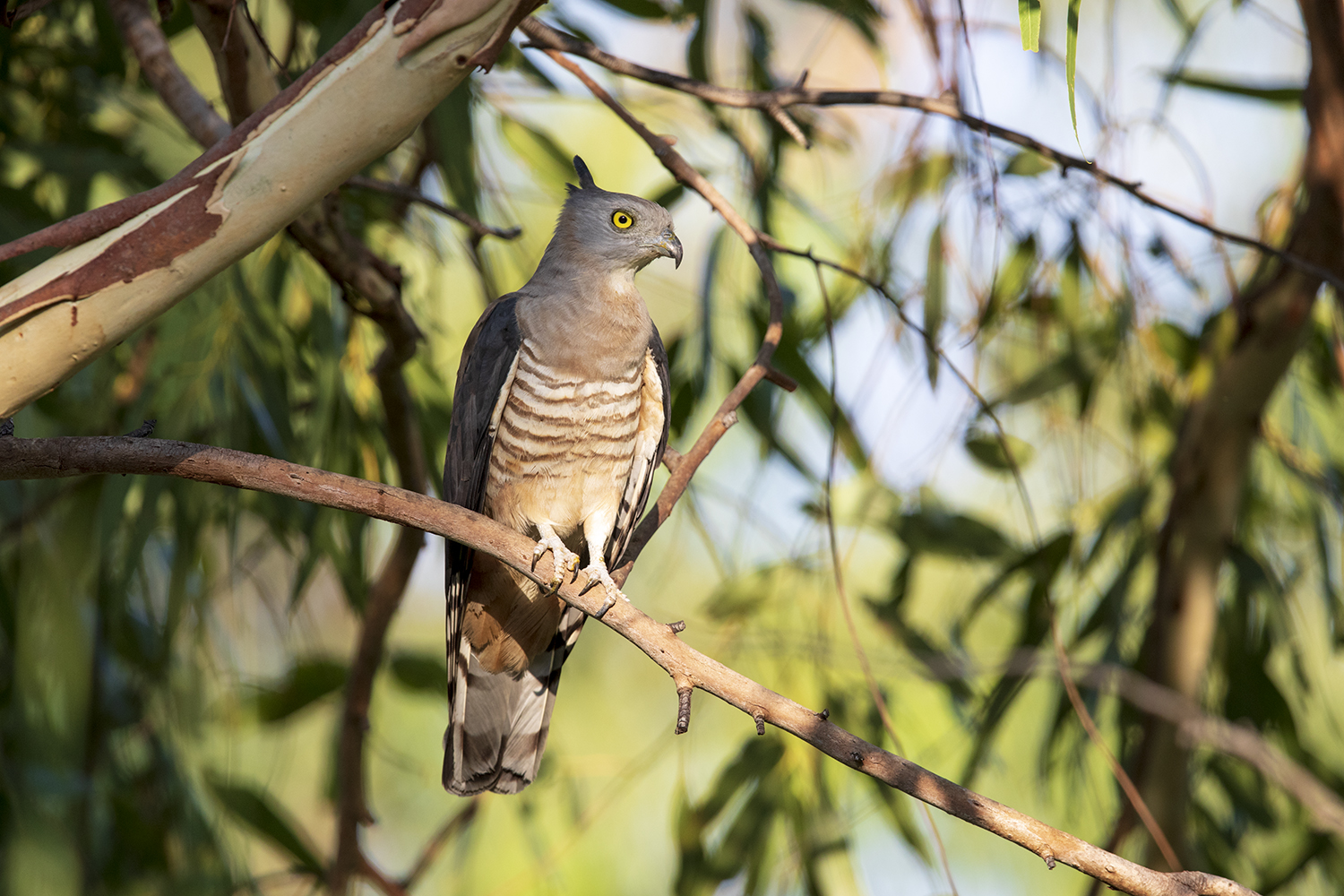
Pacific Baza (Aviceda subcristata)
The Pacific Baza (Aviceda subcristata) is a medium-sized, long-tailed hawk with a prominent crest. It is slim-bodied, with a narrow head and neck. The wings are paddle-shaped, well-rounded and deeply 'fingered'. The head, neck and breast are grey and the underparts are white with bold dark banding. The legs are short with weak toes. The eyes are golden-yellow and domed, placed well on the side of the head, giving a slightly 'pop-eyed' look. The female is heavier and browner on the crown than the male. It is also known as the Crested Hawk or Baza, or the Pacific Cuckoo-Falcon.
Rose-crowned Fruit Dove (Ptilinopus regina ewingii)
The spectacular Rose-crowned Fruit-dove are found in the Monsoon Forests around Darwin, They usually forage in the canopy of rainforest trees, clambering about among the leaves of the outer branches to pluck ripe fruit, Despite their bright plumage, when foraging they are often surprisingly difficult to see among the foliage. There is a chance to see Rose-crowned Fruit-dove on any of our tours including the Day Trips.
Contact Us:
Phone numbers:
Australia +61 476 110 084 / 0476 110 084
E-mail:
[email protected]
Postal:
Head Office (Darwin):
Tracks Birding & Photography Tours
5/17 Dinah Court
Stuart Park 0820
Northern Territory, Australia
Photo Website:
www.laurieross.com.au
© Tracks Birding and Photography Tours, Australia | Helping guests find birds since 2016
